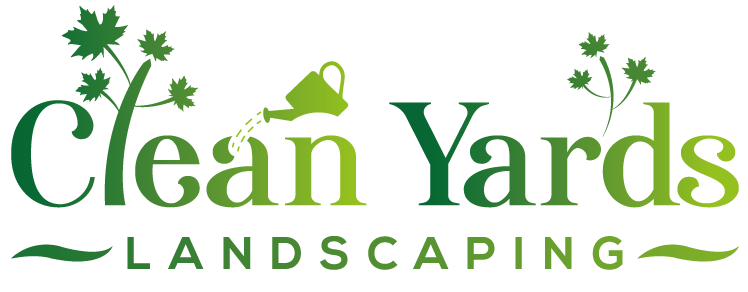Vernon Waterfall Care: Prevent Summer Algae & Pump Issues
Quick Guide to Waterfall Care
- Prevent algae by reducing nutrients (clean debris, limit runoff) & using beneficial bacteria.
- Maintain pump health: Clean intake screen monthly & store indoors over winter.
- Top off water levels frequently during summer to prevent pump damage.
- Follow seasonal checklists for spring startup and fall shutdown specific to Ottawa climate.
- Consider eco-friendly practices like rainwater harvesting and native plants.
Ready to ensure your waterfall stays beautiful year-round? Don't wait for problems to arise! Request a quote for professional waterfall maintenance today!
Introduction: Dive Into Sparkling Waterfall Care in Vernon!
Welcome, Vernon neighbours! Isn't a backyard waterfall just the *best* way to add some sparkle and soothing sounds to your landscape? We think so too! They bring a little piece of nature right into our yards, offering a peaceful escape.
But let's be honest, sometimes keeping that cascade crystal clear can feel less than relaxing, especially during those warm, humid Ottawa summers. Suddenly, you might find yourself battling stubborn green algae that seems to appear overnight, or perhaps your trusty pump decides it needs an unscheduled break – right when you want to enjoy the view! It happens to the best of us, whether you're here in Vernon, over in nearby Greely, or enjoying your garden in Metcalfe.
Don't worry, though! Keeping your water feature looking fantastic doesn't have to be a headache. This guide is here to help. We'll walk you through simple, practical tips for waterfall care – from tackling that pesky algae to basic pump maintenance and keeping everything flowing beautifully. Let's dive in and make sure your waterfall is the envy of the neighbourhood all season long!
Your Waterfall's Ecosystem: Understanding the Flow in the Ottawa Valley
Okay, let's think of your backyard waterfall not just as rocks and water, but as its own little ecosystem. Like any neighbourhood in Ottawa, from bustling Barrhaven to peaceful Greely, it has its own rhythm and needs a bit of balance to thrive. Understanding the moving parts (literally!) is the first step to keeping things flowing smoothly and preventing headaches later on.
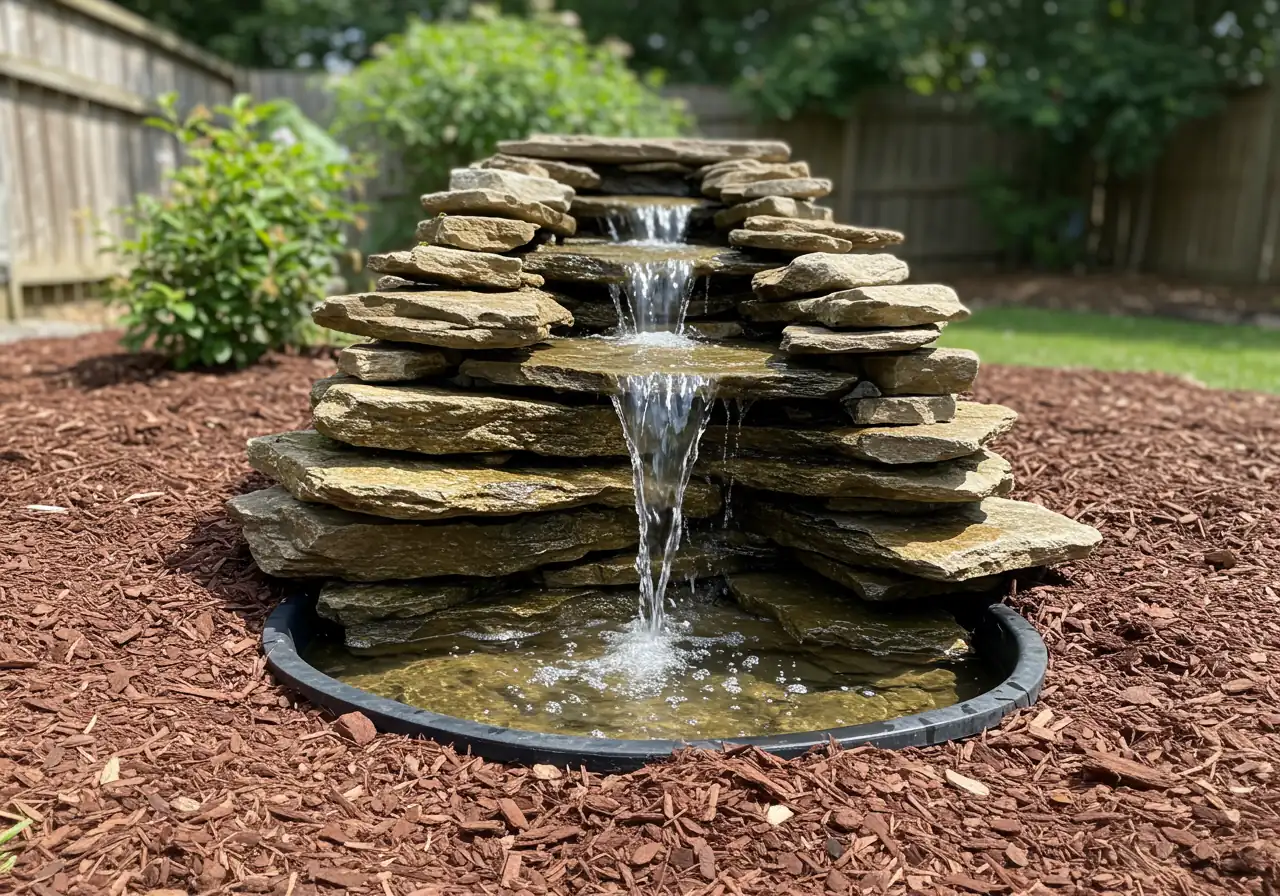
At its core, your waterfall is a pretty simple circulation system. Think of it like this:
- The Basin or Reservoir: This is the pool at the bottom where the water collects. It's the starting and ending point for the water's journey.
- The Pump: Consider this the heart of your waterfall. Usually hidden underwater in the basin, its job is to push water upwards.
- The Plumbing: These are the hidden tubes or pipes that act like arteries, carrying water from the pump up to the highest point of your waterfall.
- The Spillway: This is the lip or opening at the top where the water emerges and begins its tumble downwards over the rocks or structure you’ve designed.
- The Liner: This unseen hero is the waterproof membrane beneath the rocks and stream bed, keeping all that lovely water contained within your feature and preventing it from just soaking into the ground.
So, the pump sends water up the plumbing, it spills beautifully over the top, cascades down your rockery or feature, and lands back in the basin, ready for another trip. Easy peasy, right?
Well, mostly! Here in the Ottawa Valley, our distinct seasons add a few twists. Those glorious, hot, and sometimes humid summers mean water evaporates much faster – you'll find yourself needing to top up the water level regularly. Summer heat also provides a five-star resort for algae growth, which can quickly turn your sparkling stream a bit green if you're not careful.
Then comes winter. Brrr! Our freezing temperatures are no joke for water features. If water freezes inside your pump or plumbing, it can expand and cause serious, expensive damage. That’s why proper shutdown and winterization are absolutely essential. Investing time in Vernon Fall Cleanup and Ottawa Winter Prep for your waterfall can save you a lot of trouble come springtime.
Don't forget your surrounding landscape either! The conditions right around your waterfall matter. Think about the soil in areas like Osgoode – if you have heavy clay soil nearby, a big rainstorm could wash silt and sediment into your basin, clouding the water. Proper soil preparation in adjacent beds can help. Your gardening practices make a difference too. Runoff carrying lawn fertilizers, pesticides, or even just loose mulch from nearby beds can flow into your waterfall, upsetting the water chemistry and potentially harming fish or plants. Leaves, twigs, and petals falling into the water are also part of the cycle, especially during peak growing seasons – understanding the Vernon Spring Plant Lifecycle Care helps anticipate this. Even beneficial additions like nearby Vernon Native Plants in a Pollinator Garden Installation need consideration, as fallen blossoms or leaves contribute to debris. Performing a thorough Vernon Fall Garden Checkup for Winter Prep in the areas surrounding your waterfall helps minimize debris that could cause issues over winter or during the spring thaw.
Keeping this mini-ecosystem happy means understanding how all these pieces – the equipment, the weather, and your yard – work together. Of course, if diagnosing pump gurgles or prepping for winter sounds less than fun, checking out professional Landscaping Services who handle water feature maintenance is always a great option!
Winning the War on Green: Effective Algae Control Strategies
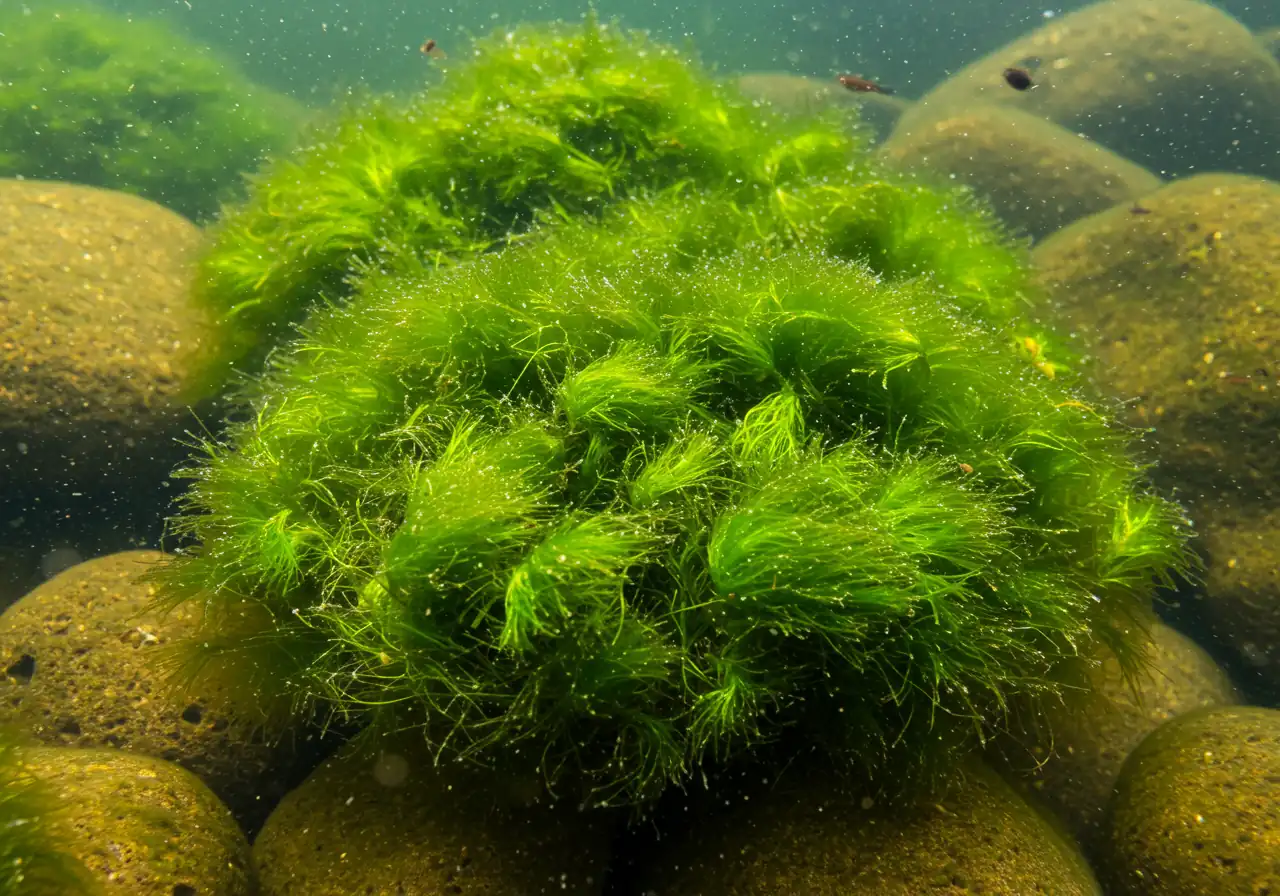
Ah, algae. That green (or sometimes brown or stringy!) stuff that seems to think your beautiful waterfall is its personal spa resort. One minute, your stream is sparkling, the next, it looks like something a swamp monster would appreciate. Don't worry, battling the green meanie is a common quest for water feature owners, especially during our lovely, sunny Ottawa summers. The good news? You *can* win this war!
Why Me? Understanding Algae's Appetite
Algae isn't picky, but it *loves* a few key things:
- Sunlight: Like most plants, algae photosynthesizes. Lots of direct sun, especially in wide-open backyards like you might find in parts of Barrhaven or sunny Vernon spots, basically rolls out the welcome mat.
- Nutrients: Algae feasts on nitrates and phosphates. These sneak into your water from decaying leaves, grass clippings, fish waste (if you have fishy friends), fertilizer runoff from nearby lawns or gardening beds, and even tap water used for top-ups. Proper mulching and edging can help contain garden materials.
- Warm Water: Those balmy Ottawa summer days heat the water, kicking algae growth into high gear.
- Poor Circulation: If water isn't moving well, algae finds comfy spots to settle down and multiply.
Prevention: Your First Line of Defence
The best way to fight algae is to make your waterfall less inviting *before* it moves in:
- Throw Some Shade: If possible, position your waterfall to get some afternoon shade. Adding taller aquatic plants like water lilies or marginal plants around the edges can also help block sunlight. Need help integrating plants? Sometimes advice from an expert city garden maintenance service can point you in the right direction for suitable plant choices.
- Starve It Out: Keep decaying stuff out! Regularly skim leaves and debris from the water surface and the basin. Be mindful of fertilizer use nearby, perhaps opting for better lawn care practices. Ensure your surrounding yard is tidy to minimize blow-in debris – sometimes a thorough Vernon yard cleanup service can make a huge difference in reducing the organic matter around your water feature.
- Keep it Moving: Ensure your pump is adequately sized and running consistently (often 24/7 during the season) to keep water circulating and oxygenated.
- Plant Power: Introduce beneficial aquatic plants. They compete directly with algae for nutrients and provide shade. Think water hyacinths (careful, they spread!), water lettuce, or submerged plants like hornwort. Consider a garden installation focused on aquatic plants.
Operation: Manual Scrub-Down
Okay, so the green stuff snuck past your defences. Time for some hands-on action:
- Power Down: Turn off your waterfall pump. Safety first, and it stops algae bits from circulating everywhere.
- Scrub-a-Dub: Use a stiff-bristled brush (no wire brushes on liners!) to scrub algae off rocks and liner surfaces. Put some elbow grease into it!
- Net Gain: Use a fine mesh pond net to scoop out as much of the loosened algae and floating gunk as possible.
- Water Swap (Optional): If the water is really murky or the algae was severe, consider doing a partial water change (removing and replacing 25-50% of the water). Remember to use a pond dechlorinator if adding tap water, especially if you have fish.
- Debris Check: If manual cleaning becomes a constant, overwhelming battle, it might indicate a larger issue with debris from the surrounding property. In severe cases, a more comprehensive Property Clean Up might be necessary to address the root cause. You can also check our transformations page for examples of thorough cleanups.
Treatment Time: Choosing Your Weapon Wisely
When prevention and scrubbing aren't enough, consider these treatments, starting with the friendliest options:
- Beneficial Bacteria: These microscopic allies are fantastic! They consume the same excess nutrients algae thrive on, essentially starving it out. Add them regularly (follow product instructions) throughout the season. They're safe for fish, plants, and wildlife.
- Barley Straw: An old-school method. As barley straw decomposes in water, it releases compounds that inhibit algae growth. You can buy it in small bales or pellets. Results vary, and it works slowly as a preventative.
- Algaecides (Use Sparingly!): Chemical treatments can work quickly but should be a last resort. *Always* read and follow the label instructions precisely. Measure your water volume carefully to avoid overdosing, which can harm fish, desirable plants, and disrupt your waterfall's ecosystem. If unsure, it's often best to seek help from professional landscaping and maintenance services who understand safe application. Adhere to our terms and conditions when using any treatments advised by professionals.
Algae Control Methods: Quick Comparison
| Method | Effort | Cost | Speed | Eco-Friendly |
|---|---|---|---|---|
| Manual Removal | High | Low | Immediate | Yes |
| Aquatic Plants | Medium (setup) | Medium | Slow/Medium | Yes |
| Beneficial Bacteria | Low | Low/Medium | Slow/Medium | Yes |
| Barley Straw | Low | Low | Very Slow | Yes |
| Algaecides | Low | Medium/High | Fast | No |
Dealing with algae is just part of enjoying a water feature in our region. With consistent prevention and the right approach when it does appear, you can keep your waterfall looking great. If the green goo gets overwhelming, remember that help is available through a reliable Ottawa property cleanup service to get things back under control. Keep fighting the good fight, and enjoy those soothing sounds! Find us easily on Google: Clean Yards GMB.
Pump Health: Keeping Your Waterfall's Heart Pumping Strong
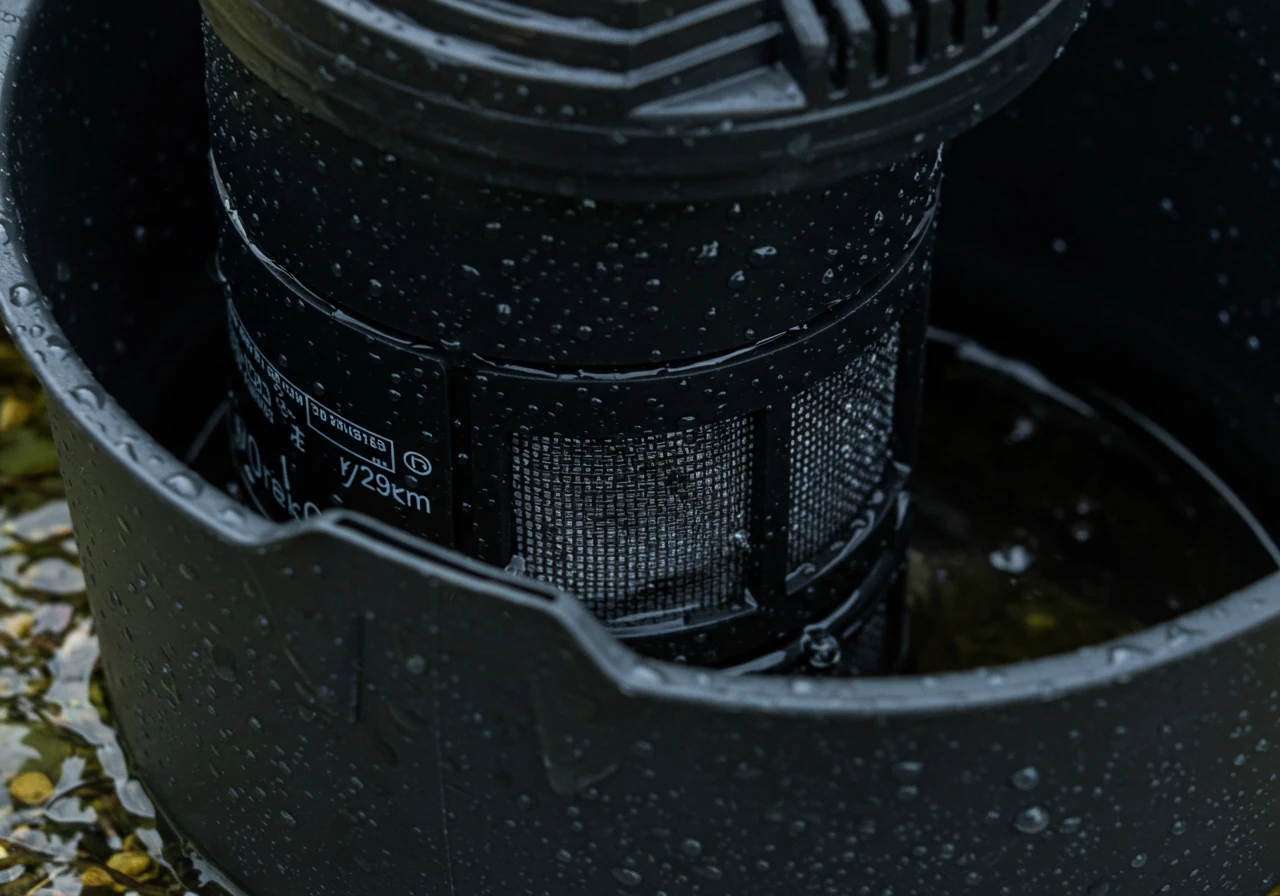
Alright, let's talk about the unsung hero of your gorgeous waterfall – the pump! Think of it as the heart of your water feature. It’s working away quietly (hopefully!) underwater, pushing gallons of water uphill so you can enjoy that soothing cascade. Just like our own hearts need care, your pump needs a little TLC to keep pumping strong, season after season. Ignore it, and you might face the dreaded silence of a stalled waterfall, often caused by burnout or clogs – neither of which is fun!
Common pump problems usually boil down to a few culprits:
- Clogging: This is the big one! Leaves, algae, sludge, stray pebbles, bits from surrounding gardening beds – they can all get sucked towards the pump's intake, reducing flow or stopping it completely.
- Low Flow: Often a symptom of clogging, but could also mean the pump is struggling or isn't quite powerful enough for your waterfall height.
- Weird Noises: Grinding or rattling can indicate something stuck near the impeller (the spinning part inside) or more serious internal wear.
Luckily, regular maintenance is pretty straightforward and can save you the headache and expense of a replacement pump. Think of it as a quick spa day for your waterfall's hardest worker!
Your Simple Pump Check-Up Routine (Aim for monthly during peak season):
(This section is marked up with HowTo Schema in the head)
- Power Down! *Always* unplug the pump from its power source before reaching into the water or handling it. Safety first!
- Remove & Inspect: Carefully lift the pump out of the water (it might be housed in a protective vault or skimmer box). Give it a quick visual check. Is the casing cracked? Are wires looking frayed? (If yes, replacement might be needed).
- Clean the Intake: Most pumps have an intake screen or pre-filter designed to block larger debris. This is *prime clog territory*. Gently scrub it clean with a stiff brush (an old toothbrush works wonders). Rinse it thoroughly. If debris from the wider yard seems excessive, considering a professional city yard cleanup service can reduce the amount of material ending up in your pond.
- Check the Impeller (If Accessible): Some pumps allow easy access to the impeller. *Consult your pump manual first.* If you can open it, gently check for and remove any stringy algae, small pebbles, or debris wrapped around the spinning parts. Be careful not to damage the impeller.
- Hose Check: Ensure the discharge hose or pipe is securely connected and not kinked or blocked.
- Reassemble & Reposition: Put everything back together and place the pump back in its spot, making sure it's stable and upright.
- Power Up & Observe: Plug it back in. Watch the water flow. Does it look strong and consistent? Listen for smooth operation.
Ottawa Seasonal Pump Care:
Our distinct seasons demand specific attention. Homeowners in areas with mature landscaping, like beautiful Manotick or Richmond, know seasonal prep is key.
- Spring Start-Up: Before reinstalling your pump after winter, give it a thorough cleaning using the checklist above. Make sure the impeller spins freely.
- Fall Shutdown: *Crucial!* Before freezing temperatures hit, remove your pump from the pond. Clean it thoroughly one last time, then store it in a bucket of water in a frost-free location (like a basement or heated garage). This prevents seals from drying out and protects it from ice damage. Leaving it outside, even if drained, risks freeze damage. If seasonal prep feels daunting, specific local help like a Metcalf yard cleanup service or even a Marionville yard cleanup service might offer targeted fall shutdown assistance for features.
Taking 15-20 minutes monthly for pump care significantly extends its life, ensures consistent flow, and prevents costly surprises. Debris from a newly completed project, like a beautiful garden installation, can sometimes increase initial clogging risk, so keep an eye out after any major landscaping work nearby. Even simpler additions like sod installation can introduce loose material temporarily.
If you're ever unsure about pump maintenance, notice persistent problems, or just prefer leaving it to the pros, don't hesitate to reach out! You can learn more about us and our services. We handle customer information responsibly, as outlined in our privacy policy. A healthy pump means a happy, beautiful waterfall!
Your Ottawa Waterfall Care Calendar: A Season-by-Season Guide
Okay, Ottawa waterfall lovers! Keeping your water feature looking its best year-round doesn't have to be a chore. Think of it like seasonal landscaping – a little attention at the right time makes all the difference. Here’s your easy-peasy, season-by-season guide tailored for our unique Ottawa climate:
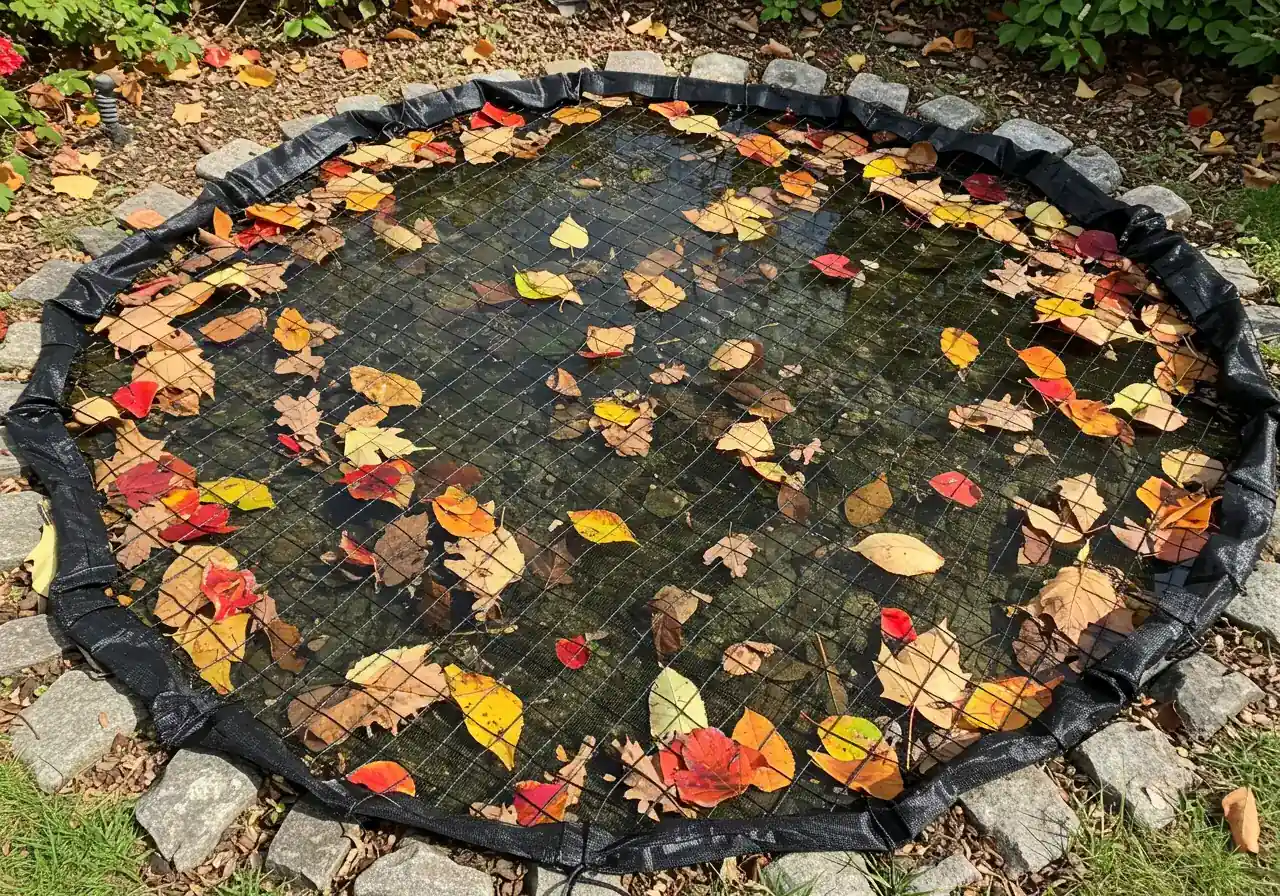
Spring Start-Up: The Grand Re-Opening!
Ah, spring! The snow melts, the birds are singing (maybe a bit too early sometimes!), and it's time to wake up your waterfall.
- Pond Patrol: First, clear out winter’s leftovers – leaves, twigs, and any other gunk that accumulated in the basin or stream bed. Pay extra attention if you're near the river in areas like Kars or Manotick, as spring runoff can wash extra silt or debris into unprotected features. Consider a city property cleanup service if winter debris is extensive.
- Equipment Check: Give your pump, plumbing, and filter media (if you have one) a good clean *before* putting them back in place. Check for any damage from the winter freeze.
- Fill 'er Up: Add fresh water as needed. Remember to use a pond-safe dechlorinator if using tap water, especially if you have fish or sensitive plants.
- Power On & Observe: Start the pump and watch! Check for leaks, ensure good flow over the spillway, and listen for any weird pump noises.
- First Dose: Add a dose of beneficial bacteria to kickstart the ecosystem balance and help prevent early algae blooms. Seeing a freshly started waterfall is one of the true joys of spring gardening!
Summer Maintenance: Keeping Cool and Clear
Summer in Ottawa means enjoying the sunshine, but that warmth and light also encourage algae growth. Stay vigilant!
- Top Off Regularly: Evaporation happens fast in our humid summers. Keep the water level consistent to protect your pump.
- Algae Alert: Keep an eye out for green fuzz or string algae. Skim surface debris frequently. Use beneficial bacteria regularly to outcompete algae for nutrients. If algae gets ahead, refer back to effective control strategies.
- Pump Check: Briefly check the pump intake screen every few weeks to ensure it's not getting clogged, especially after storms or if you notice reduced flow.
- Plant Pruning: Trim any overgrown aquatic plants to maintain balance and prevent them from clogging the water flow. This is part of overall professional garden maintenance for the feature itself.
Fall Shutdown: Prepping for the Deep Freeze
This is *crucial* for protecting your investment through Ottawa's harsh winters. Don't wait until the first hard frost!
- Leaf Defence: As leaves fall, especially in leafy neighbourhoods like Nepean or Metcalfe, prevent them from piling up in your waterfall. Use netting over the pond/stream if needed, and skim frequently. Excess debris requires more work; sometimes a focused cleanup, like a Marionville property cleanup service or a Metcalf property cleanup service, can make fall prep easier in surrounding areas too.
- Plant Prep: Trim back hardy aquatic plants. Remove tropical or non-hardy plants before the first frost.
- Pump Out! *Before* freezing temperatures hit consistently, disconnect and remove the pump. Clean it thoroughly. Store it in a bucket of water in a frost-free location (like a basement) to keep seals moist. *Do not leave it outside, even drained!*
- Drain & Secure (Optional): Some people partially drain their features or drain exterior plumbing lines to prevent ice damage. Check your specific waterfall design recommendations. Secure any loose stones. Curious about how these transformations hold up? Check out some inspiring waterfall transformations we've seen endure Ottawa winters.
Winter Dormancy: Let It Sleep
Your waterfall is resting. Not much to do now but dream of spring!
- Occasional Check: Peek occasionally to ensure heavy snow or ice isn't putting undue stress on structures. Ensure covers or netting haven't collapsed.
- Plan Ahead: Winter is a great time to research new aquatic plants or maybe even plan for upgrades next season! Get inspired and learn more about us and how we might help. We appreciate you visiting our site and hope you find this useful - thank you!
Eco-Friendly Waterfall Wonders: Sustainable Practices for Ottawa Gardeners
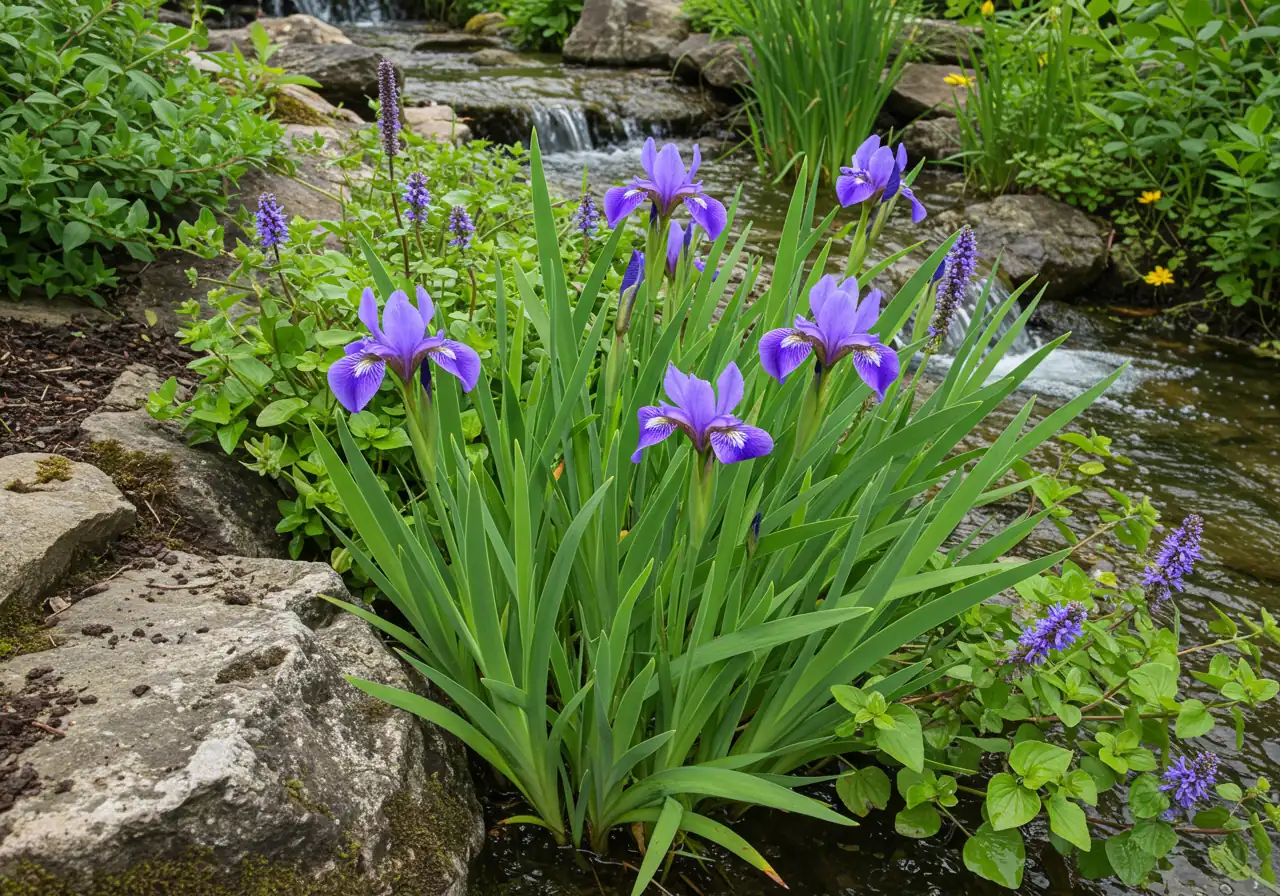
Okay, fellow Ottawa green thumbs! Love your waterfall but also love Mother Earth? High five! Creating a stunning water feature doesn't mean you have to throw sustainability out the window. In fact, an eco-friendly waterfall can be even *more* beautiful and rewarding, fitting right in with the community pride we see in places like Russell and Embrun for keeping things green. Let's make your backyard cascade a haven for nature, not a drain on resources.
- Water Wisdom: Water conservation is key. Consider using rainwater collected in barrels to top off your feature – plants and fish love it! Check local resources like the Rideau Valley Conservation Authority for water conservation tips. Designing with minimal splash and using efficient recirculating pumps ensures you're not constantly refilling. Think carefully about the size of your basin; bigger isn't always better if it leads to excessive evaporation.
- Power Down: Choose energy-efficient pumps. Look for newer models, maybe even variable speed ones, or consider adding a timer so it doesn't run 24/7 if constant flow isn't critical for your setup (though consistent flow *does* help water quality). Solar pumps are another great, green option for smaller features!
- Go Native! Incorporating native plants around your waterfall is a win-win. They’re naturally adapted to our Ottawa climate, require less fuss, and provide food and shelter for local wildlife. Think gorgeous Blue Flag Iris, sunny Marsh Marigolds, or Pickerel Weed along the edges where roots can reach moisture. These choices contribute to sustainable landscaping and look fantastic. Smart choices during construction are also vital; check out some sustainable ideas for landscape material selection using local stone when possible. The Ottawa Horticultural Society can be a good resource for native plant ideas.
- Nature's Clean-Up Crew: Ditch the harsh chemicals! Rely on beneficial bacteria, barley straw, and good old-fashioned skimming and scrubbing to manage algae. This protects not only your little pond ecosystem but also helps keep pollutants out of local waterways like the Rideau River system. Keeping the surrounding gardening areas tidy also prevents nutrient runoff – sometimes a general city yard cleanup service can help manage potential sources of contamination like excess fertilizers or decaying matter. Preventing leaves and debris from entering the water is crucial, especially in the fall. If the surrounding yard contributes a lot of debris, a thorough Ottawa yard cleanup service can reduce this load significantly. Specific regional needs? Even focused help like a Marionville yard cleanup service emphasizes how localized cleanup contributes to the bigger eco-picture.
- Welcome Wildlife: A gently flowing waterfall provides drinking water for birds and beneficial insects like dragonflies. Add some flat rocks for perching near the water's edge, and maybe even a shallow 'beach' area with pebbles for easier access. You’ll be amazed at the life it attracts!
Building a waterfall that’s kind to the planet makes its soothing sounds even sweeter. Got questions about implementing these eco-friendly tips? Don't hesitate to get in touch with us!
Factors Contributing to Summer Algae Growth (Example)
Quick Tips for a Trouble-Free Vernon Waterfall
Question: How can I stop that annoying green algae *before* it takes over my Vernon waterfall?
Answer: Think 'starve the beast'! Algae loves nutrients from decaying leaves, grass clippings, and fertilizer runoff. Keep your waterfall basin and stream skimmed clean, especially after mowing or gardening nearby. Keeping the surrounding yard tidy is crucial; a professional Ottawa yard cleanup service can significantly reduce the leaves and organic debris that might blow or wash in, feeding algae blooms. Also, add beneficial bacteria regularly – they’re like tiny superheroes eating the algae's food source!
Question: My waterfall flow seems weak sometimes. How do I keep my pump happy?
Answer: Clogs are the usual suspect! Your pump works hard, and its intake screen is designed to catch debris. About once a month during peak season (more if needed!), *safely* unplug your pump and pull it out. Check that intake screen – leaves, stringy algae, and muck love to collect there. Give it a gentle scrub with a stiff brush (an old toothbrush is perfect). This simple preventative landscaping maintenance keeps water flowing strong and prevents pump strain.
Question: Do I *really* need to take my pump out for our Ottawa winters?
Answer: You betcha! It’s non-negotiable in our climate. Freezing water expands and can easily crack your pump housing or damage internal parts – ouch! Before the first hard freeze hits (usually late October/early November), disconnect the pump, give it a final clean, and store it submerged in a bucket of water in a frost-free spot like your basement or heated garage. Skipping this step is asking for a springtime headache and expense. Tidying up nearby plants before winter helps too; a focused fall cleanup, maybe like options offered by a Metcalf garden clean up service, ensures less decomposing material near your feature during shutdown.
Question: How often should I add water? Does it really matter?
Answer: Yes, it matters a *lot*! Our Ottawa summers can be surprisingly hot and humid, leading to rapid evaporation. Your pump *must* stay fully submerged to operate correctly and avoid overheating or burning out. Check the water level in your basin every few days (even daily during heat waves!) and top it off as needed. Using collected rainwater is great! If heavy rains wash soil into your feature, improving drainage or ensuring proper soil preparation in adjacent garden beds can minimize this muddy mess.
Question: Help! My algae fight feels hopeless / my pump sounds like it's gargling rocks! What now?
Answer: Take a breath! If scrubbing and skimming aren't enough, algae keeps roaring back, or your pump is making suspicious noises, it might be time to call in the pros. Sometimes you need an expert eye to diagnose a tricky issue or perform a really deep clean. If general yard debris is the constant culprit, tackling the source with help from a service like a Marionville yard cleanup service can make a huge difference. When seeking professional help, reviewing estimate feedback can help you choose a reliable service to get your beautiful Vernon water feature back in tip-top shape.
FAQs: Your Ottawa & Vernon Waterfall Questions Answered
Got questions about keeping your waterfall flowing freely in Vernon, Greely, or anywhere else in our beautiful Ottawa region? You're not alone! Here are answers to some common queries we hear:
Ottawa's hard water can leave white mineral scale on rocks and equipment over time. Regular light scrubbing helps prevent major buildup. Using collected rainwater for top-ups reduces mineral input. Ensuring good drainage and considering proper soil preparation in nearby gardening beds can also minimize mineral-rich runoff entering your feature. Often, simple cleaning is enough without needing special treatments.
Hardy goldfish varieties like Comets or Shubunkins, and Koi (if your pond is deep enough - ideally 4 feet or more) are the best choices for our climate. They need that depth to stay below the ice and require open water maintained by a de-icer or aerator for oxygen. Always best to chat with knowledgeable staff at local pet stores for advice specific to your setup.
Ah, the price of beautiful, mature landscaping! Netting stretched over the pond and stream during peak leaf fall is highly effective. Skimming frequently is also key. Don't forget to manage leaves in the surrounding gardening beds too – a good tidy-up helps, maybe using an Ottawa garden clean up service or a focused team like a Marionville garden clean up service can drastically reduce the amount of debris blowing into your water feature. Sometimes a city garden clean up service approach is needed for larger areas.
It's possible! Regulations depend on factors like the waterfall's size, if new electrical wiring is needed, and its location relative to property lines. Your safest bet is *always* to check directly with the City of Ottawa or your local municipality (like Russell or Metcalfe). They have the final say on zoning, permits, and even general property upkeep which sometimes relates to services like a city property cleanup service ensuring features don't become hazards.
Yes, definitely leave water in the basin – it helps support the liner and sides against frost heave. However, drain any exposed plumbing lines that could freeze and crack. If you have fish, use a pond heater/de-icer or aerator specifically designed to maintain a small opening in the ice for gas exchange. Never run your main waterfall pump in freezing weather!
Conclusion: Enjoy Your Sparkling Oasis in Vernon!
So there you have it! Keeping your beautiful Vernon waterfall sparkling doesn't require a PhD in pond-ology, just a little know-how and consistent care. Think of the payoff: those soothing sounds washing away the stress of the day, the visual sparkle it adds to your landscaping, and maybe even impressing the neighbours (just a little!). It truly enhances your whole outdoor living experience.
Remember the basics we covered:
- Tackling algae *before* it throws a green party in your pond.
- Giving your pump regular check-ups so it doesn't quit mid-cascade.
- Following those essential seasonal steps, especially the critical winter prep for our chilly Ottawa climate.
These are the keys to a healthy, happy water feature integrated beautifully into your gardening space.
Feeling ready to roll up your sleeves and be the waterfall whisperer of your domain? Fantastic! Use this guide as your roadmap to success. However, if life’s busy or you’d rather leave the scrubbing and seasonal chores to someone else – hey, no judgment here! – we get it. Whether you're right here in Vernon, or enjoying your yard in nearby Winchester, Kenmore, Embrun, Kars, Osgoode, Greely, or Manotick, professional help is just a call or click away.
Don't let maintenance worries dim your waterfall's shine. Reach out to us for expert care and keep enjoying your personal backyard oasis!
For more information about our full range of services, including garden maintenance and comprehensive property clean up, visit our website.
